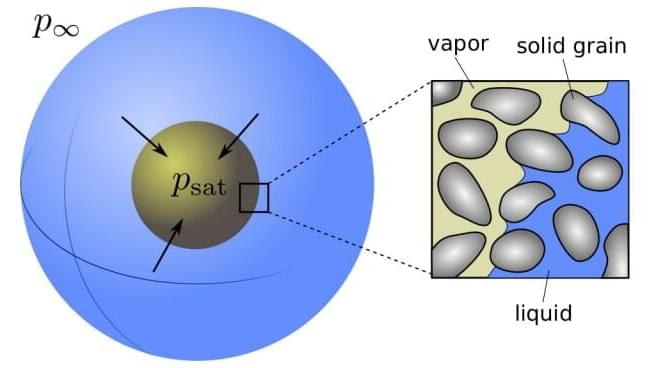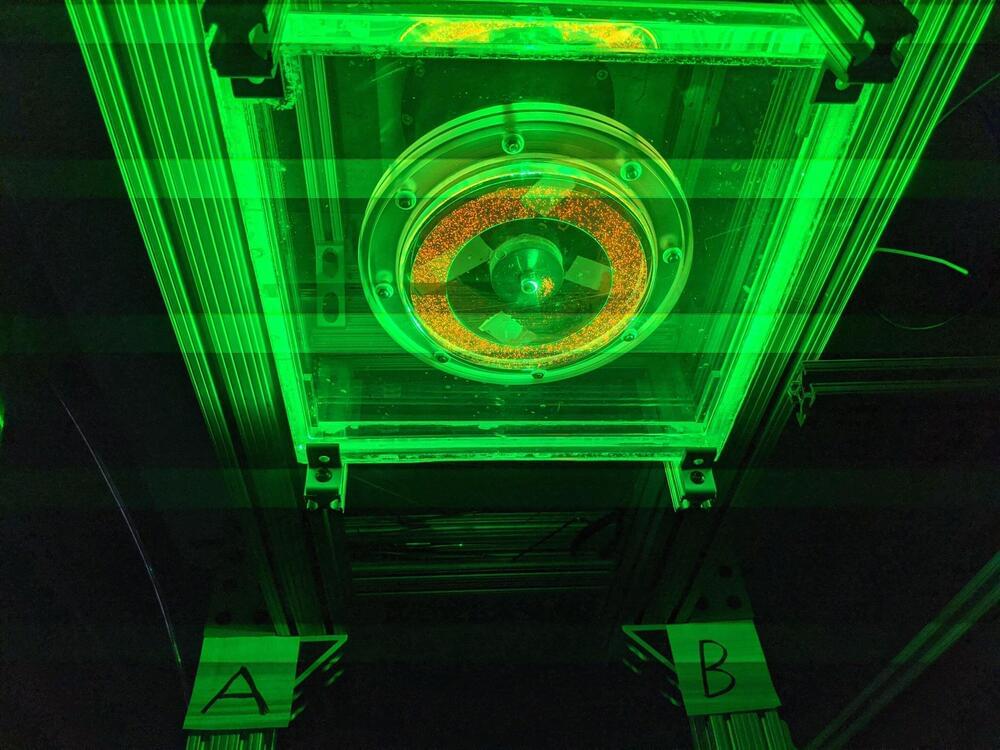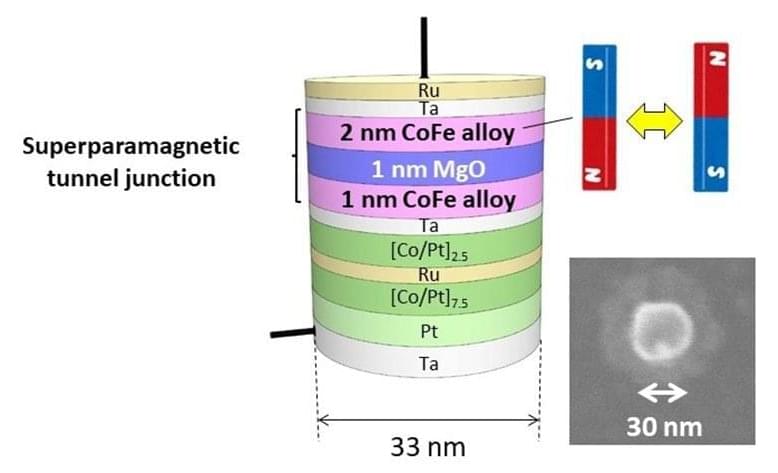Archive for the ‘engineering’ category: Page 79
Aug 31, 2022
The 45-year-old probe is aging gracefully
Posted by Gemechu Taye in categories: engineering, habitats, health
Since May, the engineering team with NASA’s Voyager 1 spacecraft had been trying to solve a mystery. The 45-year-old spacecraft seemed to be in excellent condition, receiving and executing commands from Earth, along with gathering and returning science data — but the probe’s attitude articulation and control system (AACS) was sending garbled information about its health and activities to mission controllers.
The AACS controls the spacecraft’s orientation and keeps Voyager 1’s high-gain antenna pointed precisely at Earth, enabling it to send data home. Though all signs suggested that the AACS was still working, the telemetry data was invalid.
While the spacecraft continues to return science data and otherwise operate as normal, the mission team is searching for the source of a system data issue.
Continue reading “The 45-year-old probe is aging gracefully” »
Aug 31, 2022
First 3D-Printed High-Performance Nanostructured Alloy That’s Both Ultrastrong and Ductile
Posted by Saúl Morales Rodriguéz in categories: biotech/medical, engineering, nanotechnology, transportation
Alloy that exceeds the strength and ductility of other state-of-the-art additively manufactured materials. This breakthrough could lead to higher-performance components for applications in aerospace, medicine, energy, and transportation. The work was done by researchers from the University of Massachusetts Amherst and the Georgia Institute of Technology. It was led by Wen Chen, assistant professor of mechanical and industrial engineering at UMass, and Ting Zhu, professor of mechanical engineering at Georgia Tech, will be published today (August 3, 2022) in the journal Nature.
High entropy alloys (HEAs) have become increasingly popular as a new paradigm in materials science over the past 15 years. They are comprised of five or more elements in near-equal proportions and offer the ability to create a near-infinite number of unique combinations for alloy design. Traditional alloys, such as brass, stainless steel, carbon steel, and bronze, contain a primary element combined with one or more trace elements.
Aug 30, 2022
Brain bubbles: Researchers describe the dynamics of cavitation in soft porous material
Posted by Saúl Morales Rodriguéz in categories: engineering, neuroscience
A tiny bubble popping within a liquid seems more fanciful than traumatic. But millions of popping vapor bubbles can cause significant damage to rigid structures like boat propellers or bridge supports. Can you imagine the damage such bubbles could do to soft human tissues like the brain? During head impacts and concussions, vapor bubbles form and violently collapse, creating damage to human tissue. Purdue University fluid mechanics researchers are now one step closer to understanding these phenomena.
“When a bubble collapses inside a liquid, it generates pressure shock waves,” said Hector Gomez, professor of mechanical engineering and principal investigator. “The process of forming a vapor cavity and its collapse is what we call cavitation.”
“Cavitation has been studied since the 1800s,” said Pavlos Vlachos, the St. Vincent Health Professor of Healthcare Engineering and director of the Regenstrief Center for Healthcare Engineering. “It’s a very complex field of study because it involves non-equilibrium thermodynamics, continuum mechanics, and many other factors on a scale of micrometers and microseconds. After hundreds of years of research, we are only just now starting to understand these phenomena.”
Aug 30, 2022
Skyrocketing AEC data pushes need for data governance best practices
Posted by Shubham Ghosh Roy in categories: computing, engineering, governance
Were you unable to attend Transform 2022? Check out all of the summit sessions in our on-demand library now! Watch here.
As the architecture, engineering and construction (AEC) industry is undergoing a staggering growth in the creation of data, organizations need to place a strong focus on data governance best practices.
That is one of the findings of a new study of the AEC sector that reveals it has experienced a 31.2% compound growth rate in data storage since 2017. The amount of new data being captured or created is staggering, but getting full value from it depends on how the data is managed, stored, accessed and protected.
Aug 30, 2022
Physicists uncover new dynamical framework for turbulence
Posted by Saúl Morales Rodriguéz in categories: climatology, engineering, information science, physics
Turbulence plays a key role in our daily lives, making for bumpy plane rides, affecting weather and climate, limiting the fuel efficiency of the cars we drive, and impacting clean energy technologies. Yet, scientists and engineers have puzzled at ways to predict and alter turbulent fluid flows, and it has long remained one of the most challenging problems in science and engineering.
Now, physicists from the Georgia Institute of Technology have demonstrated—numerically and experimentally—that turbulence can be understood and quantified with the help of a relatively small set of special solutions to the governing equations of fluid dynamics that can be precomputed for a particular geometry, once and for all.
“For nearly a century, turbulence has been described statistically as a random process,” said Roman Grigoriev. “Our results provide the first experimental illustration that, on suitably short time scales, the dynamics of turbulence is deterministic—and connects it to the underlying deterministic governing equations.”
Aug 29, 2022
Europe Is Getting Serious About Making Space-Based Solar Power a Reality
Posted by Dan Breeden in categories: engineering, solar power, space, sustainability
Proposals for beaming solar power down from space have been around since the 1970s, but the idea has long been seen as little more than science fiction. Now, though, Europe seems to be getting serious about making it a reality.
Space-based solar power (SBSP) involves building massive arrays of solar panels in orbit to collect sunlight and then beaming the collected energy back down to Earth via microwaves or high-powered lasers. The approach has several advantages over terrestrial solar power, including the absence of night and inclement weather and the lack of an atmosphere to attenuate the light from the sun.
But the engineering challenge involved in building such large structures in space, and the complexities of the technologies involved, have meant the idea has remained on the drawing board so far. The director general of the European Space Agency, Josef Aschbacher, wants to change that.
Aug 27, 2022
Top 8 Engineering and Architectural Wonders of Dubai
Posted by Gemechu Taye in categories: engineering, space

The future of architecture is here!
Dubai is known for its extravagant architecture that causes envy around the world. Just when you thought its buildings could not get more futuristic, along comes ZNera space, an architecture firm with some very ambitious plans for the city.
Continue reading “Top 8 Engineering and Architectural Wonders of Dubai” »
Aug 26, 2022
From bits to p-bits: One step closer to probabilistic computing
Posted by Shubham Ghosh Roy in categories: computing, engineering, mathematics, quantum physics
Tohoku University scientists in Japan have developed a mathematical description of what happens within tiny magnets as they fluctuate between states when an electric current and magnetic field are applied. Their findings, published in the journal Nature Communications, could act as the foundation for engineering more advanced computers that can quantify uncertainty while interpreting complex data.
Classical computers have gotten us this far, but there are some problems that they cannot address efficiently. Scientists have been working on addressing this by engineering computers that can utilize the laws of quantum physics to recognize patterns in complex problems. But these so-called quantum computers are still in their early stages of development and are extremely sensitive to their surroundings, requiring extremely low temperatures to function.
Now, scientists are looking at something different: a concept called probabilistic computing. This type of computer, which could function at room temperature, would be able to infer potential answers from complex input. A simplistic example of this type of problem would be to infer information about a person by looking at their purchasing behavior. Instead of the computer providing a single, discrete result, it picks out patterns and delivers a good guess of what the result might be.
Aug 25, 2022
Polymorphism in metal halide perovskites
Posted by Quinn Sena in categories: chemistry, engineering
Circa 2020 This shape changing metal discovery can lead us closer to foglet machines.
Department of Chemical Engineering and Materials Science, Stevens Institute of Technology, Hoboken, NJ, USA. E-mail: [email protected]
Received 25th August 2020, Accepted 16th November 2020.
Continue reading “Polymorphism in metal halide perovskites” »

















